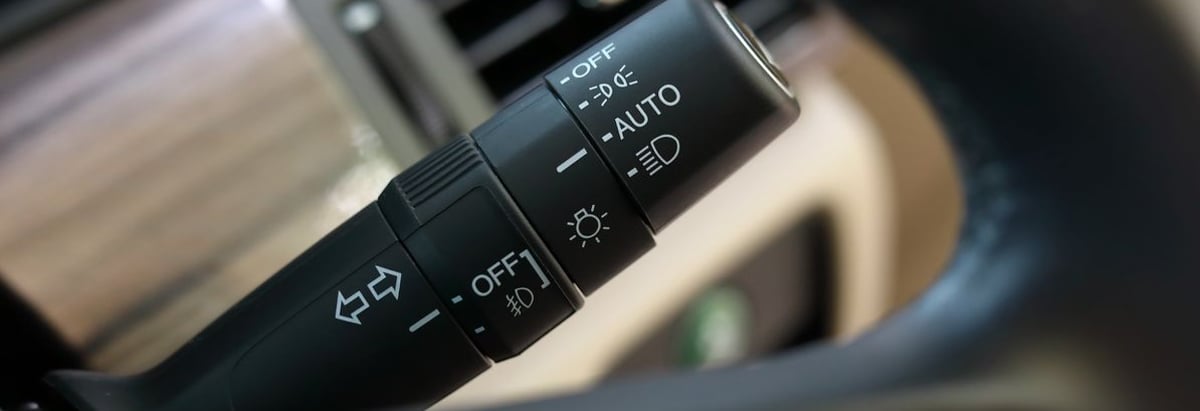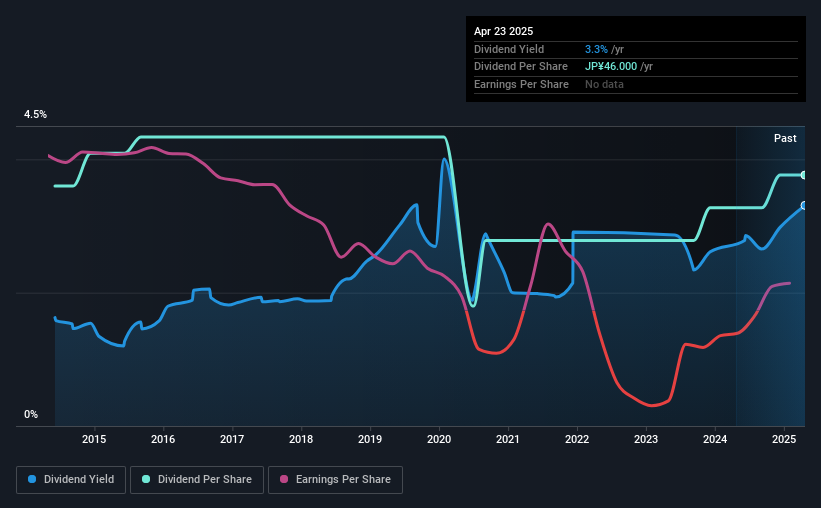- Japan
- /
- Auto Components
- /
- TSE:7279
We Wouldn't Be Too Quick To Buy Hi-Lex Corporation (TSE:7279) Before It Goes Ex-Dividend

Readers hoping to buy Hi-Lex Corporation (TSE:7279) for its dividend will need to make their move shortly, as the stock is about to trade ex-dividend. The ex-dividend date is usually set to be two business days before the record date, which is the cut-off date on which you must be present on the company's books as a shareholder in order to receive the dividend. The ex-dividend date is important because any transaction on a stock needs to have been settled before the record date in order to be eligible for a dividend. Accordingly, Hi-Lex investors that purchase the stock on or after the 28th of April will not receive the dividend, which will be paid on the 1st of July.
The company's next dividend payment will be JP¥23.00 per share, on the back of last year when the company paid a total of JP¥46.00 to shareholders. Based on the last year's worth of payments, Hi-Lex stock has a trailing yield of around 3.3% on the current share price of JP¥1390.00. If you buy this business for its dividend, you should have an idea of whether Hi-Lex's dividend is reliable and sustainable. As a result, readers should always check whether Hi-Lex has been able to grow its dividends, or if the dividend might be cut.
We've discovered 3 warning signs about Hi-Lex. View them for free.If a company pays out more in dividends than it earned, then the dividend might become unsustainable - hardly an ideal situation. Hi-Lex paid out 67% of its earnings to investors last year, a normal payout level for most businesses. A useful secondary check can be to evaluate whether Hi-Lex generated enough free cash flow to afford its dividend. Hi-Lex paid out more free cash flow than it generated - 166%, to be precise - last year, which we think is concerningly high. We're curious about why the company paid out more cash than it generated last year, since this can be one of the early signs that a dividend may be unsustainable.
Hi-Lex does have a large net cash position on the balance sheet, which could fund large dividends for a time, if the company so chose. Still, smart investors know that it is better to assess dividends relative to the cash and profit generated by the business. Paying dividends out of cash on the balance sheet is not long-term sustainable.
While Hi-Lex's dividends were covered by the company's reported profits, cash is somewhat more important, so it's not great to see that the company didn't generate enough cash to pay its dividend. Cash is king, as they say, and were Hi-Lex to repeatedly pay dividends that aren't well covered by cashflow, we would consider this a warning sign.
Check out our latest analysis for Hi-Lex
Click here to see how much of its profit Hi-Lex paid out over the last 12 months.

Have Earnings And Dividends Been Growing?
Businesses with shrinking earnings are tricky from a dividend perspective. If earnings fall far enough, the company could be forced to cut its dividend. With that in mind, we're discomforted by Hi-Lex's 8.4% per annum decline in earnings in the past five years. Ultimately, when earnings per share decline, the size of the pie from which dividends can be paid, shrinks.
The main way most investors will assess a company's dividend prospects is by checking the historical rate of dividend growth. Hi-Lex's dividend payments are broadly unchanged compared to where they were 10 years ago. When earnings are declining yet the dividends are flat, typically the company is either paying out a higher portion of its earnings, or paying out of cash or debt on the balance sheet, neither of which is ideal.
The Bottom Line
Has Hi-Lex got what it takes to maintain its dividend payments? Hi-Lex had an average payout ratio, but its free cash flow was lower and earnings per share have been declining. It's not the most attractive proposition from a dividend perspective, and we'd probably give this one a miss for now.
With that in mind though, if the poor dividend characteristics of Hi-Lex don't faze you, it's worth being mindful of the risks involved with this business. Be aware that Hi-Lex is showing 3 warning signs in our investment analysis, and 1 of those doesn't sit too well with us...
If you're in the market for strong dividend payers, we recommend checking our selection of top dividend stocks.
If you're looking to trade Hi-Lex, open an account with the lowest-cost platform trusted by professionals, Interactive Brokers.
With clients in over 200 countries and territories, and access to 160 markets, IBKR lets you trade stocks, options, futures, forex, bonds and funds from a single integrated account.
Enjoy no hidden fees, no account minimums, and FX conversion rates as low as 0.03%, far better than what most brokers offer.
Sponsored ContentValuation is complex, but we're here to simplify it.
Discover if Hi-Lex might be undervalued or overvalued with our detailed analysis, featuring fair value estimates, potential risks, dividends, insider trades, and its financial condition.
Access Free AnalysisHave feedback on this article? Concerned about the content? Get in touch with us directly. Alternatively, email editorial-team (at) simplywallst.com.
This article by Simply Wall St is general in nature. We provide commentary based on historical data and analyst forecasts only using an unbiased methodology and our articles are not intended to be financial advice. It does not constitute a recommendation to buy or sell any stock, and does not take account of your objectives, or your financial situation. We aim to bring you long-term focused analysis driven by fundamental data. Note that our analysis may not factor in the latest price-sensitive company announcements or qualitative material. Simply Wall St has no position in any stocks mentioned.
About TSE:7279
Hi-Lex
Operates in automotive, industrial equipment, and medical equipment businesses in Japan and internationally.
Excellent balance sheet second-rate dividend payer.
Similar Companies
Market Insights
Community Narratives


